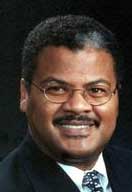Although significant progress has been made, racism still exists in U.S.
Published in the Jan. 7 – 23, 2015 issue of Morgan Hill Life
By John B. Webb III
When I first moved to Morgan Hill in 2004, I needed to get a cable box for my television set. I went to a store in Gilroy that provided these electronic components and the white woman behind the counter said point blank: “I didn’t know there were any black people in Morgan Hill.” I mischievously smiled and said, “Well, there’s at least one now.”
According to the 2010 United States Census, about 2 percent of Morgan Hill’s residents identify themselves as African American. We have African Americans living in our city who work in prestigious Silicon Valley jobs and also participate in helping make Morgan Hill a great place to live by volunteering with arts and education nonprofit organizations. Rich Constantine who serves as a leader on the Morgan Hill City Council happens to be black.
With Martin Luther King, Jr. Day coming up Jan. 17, now is a good time to reflect how far we’ve come on the road to the Civil Rights leader’s dream of an America free of racism and prejudice, and an America where everyone shares an equal opportunity to succeed in life. I also want to discuss how racism in the South Valley impacts the quality of life for everyone here.
First, let’s define racism. It’s when there is a situation where one group of people is considered inferior to another group of people based on a physical characteristic such as, in the case of black people, the amount of pigment in their skin. Racism also is a matter of education. It’s not a natural condition. To become racist, children need to be “taught” to look down at people of another race.
Also, children often learn a demeaned self-identify if they belong to a race considered “inferior” by social tradition. Consider the movie “The Help” where all the maids were black women who kept themselves in that work position because of a lack of education and a society that taught a role that they could only be servants in white people’s homes.
I was born in 1952 and grew up in the Detroit area and witnessed the progress of Civil Rights over the decades. My family lived in a neighborhood where the majority of residents were white.
During my childhood the issue of race was not something that my father and mother talked about. We were not taught to hate people. We just interacted with people and saw them simply as people.
In the 1970s in Americus, Georgia, I experienced out-right racism when I visited a restaurant for lunch with friends. The host told me that he had a seat for one person, but not two, implying that I would not be allowed to eat there. We went and sat down at a table anyway. The host called the sheriff. As the sheriff deputy arrived, the husband of the woman whom I was having lunch with arrived at the same time. When he inquired why the sheriff was there and found out it was because of me, the restaurant host pointed at me and said, “You know the rules of the restaurant — no blacks and no Jews.”
What I then found out was that the husband owned the restaurant. He informed the host that he had bought the restaurant specifically so that any person regardless of color or religious affiliation could be allowed to be a patron and enjoy a meal. The husband fired the host and the sheriff apologized and said he should have never been called.
We live in an America today very different from the era of the Civil Rights period, but the issue of racism still lingers. In recent months, we’ve seen the specter of racism rise with the shooting by a white police officer of a young black man in Ferguson, Missouri.
Our American President Barack Obama is a man of both white and black heritage, and his skin color is often a matter of discussion in national politics. It makes me wonder what kind of presidential leader would he be considered if he happened to be of the color of his mother and not of his father. His character and values would still be the same regardless of what his appearance might be, but this does not seem to be considered by many Americans.
The United States is a nation of mixed heritages. Take me, for instance. I’m one-third black, one-third white, and one-third Native American.
But I’m considered a black man because of my outward appearance. This is merely a matter of pigment. Too often as Americans, we stereotype each other based on what we see, but don’t consider the deeper inner qualities of being human.
Living in Morgan Hill, I’ve had experiences where the pigment of my skin has determined how people interact and react to me. Unlike the 1970s, if a host might take me to the back of the restaurant or an undesirable seat, I can say to the host I don’t want to sit there and I need not worry that the police might be called. Overall, the vast majority of people are fair and open and treat me with respect as a citizen of the South Valley.
The reason why Martin Luther King Jr. Day is celebrated as a federal holiday is to spotlight his “dream” that America should be a nation where everyone is treated equally and without prejudice.
We need to stop looking at one another as members of certain racial groups and start respecting each other as unique individuals the way God created us to be.
John B. Webb III is a computer consultant who lives in Morgan Hill. He wrote this guest column for Morgan Hill Life.







